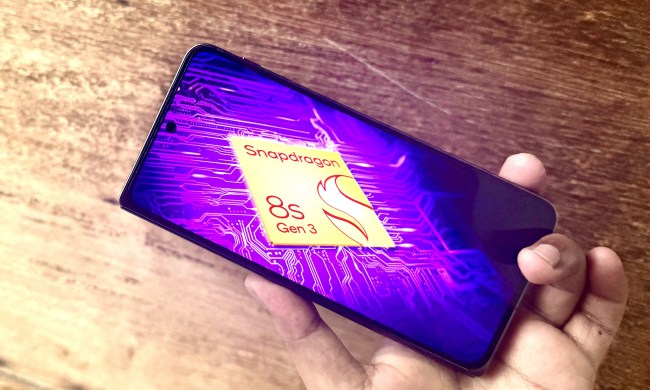New phones are fun. It’s exciting to hold them and try them out – to see what strange new innovations they’ve been packed with. I used a lot of cool new phones at CES this year. Sadly, the Grand S, while a competent phone on paper, wasn’t one of them. The official tagline for the ZTE Grand S is – and I kid you not – “There are so many S’s, but this one is different.” How it’s different, we may never know. ZTE doesn’t say and I don’t have a clue.
The Grand S is ZTE’s latest attempt to launch a competitive flagship smartphone in the United States and put some recognition behind its brand. It has the same specs as every other new flagship phone lately: quad-core Snapdragon S4 processor, 2GB of RAM, 16GB of internal storage, Android 4.1 Jelly Bean, a 13-megapixel camera, and a 5-inch 1080p screen. Compared to ZTE’s previous flagship designs, it’s a huge step up. But sit it next to top phones by HTC, Samsung, LG, Sony, or even Huawei’s Ascend D2, and its clear that despite being the fourth largest phone manufacturer in the world, ZTE doesn’t yet have what it takes to compete in the big leagues.
The build quality still feels somewhat cheap, a problem that caused me to name ZTE’s Era the “least durable phone” at last year’s Mobile World Congress. Unlike the Era, at least the Grand S was working on the show floor. Unfortunately, the units we tested were laggy – unable to keep up with our modest swipes and app launches. This is likely because ZTE’s Android skin is hogging too many resources, or there’s some underlying hardware issue. Regardless, it made an otherwise decent phone seem quite cheap.
Part of the problem, as with all of these new 1080p phones, is that ZTE is trying to run Android on an insanely high-resolution screen. HTC figured out how to do it with the Droid DNA, as has Huawei with its Ascend D2, and Sony on its Xperia Z. Why, with almost identical specs, does the ZTE Grand S lag behind? It’s certainly doesn’t have anything to do with any innovative software features. So far as I can tell, there are none. It might have been smarter for ZTE to just run a vanilla, completely clean version of Android – it likely would have operated faster – but so far, ZTE is trying to play the same game every other Android phone maker is playing, but it’s not doing a great job.
In all fairness, the Grand S is a much better phone than I expected after seeing ZTE’s press conference earlier this week. It was one of of the most laughable press conferences I’ve ever been to; the company attempted to mimic recent Samsung press conferences by having a magician – except, unlike those press conferences, he appeared to have a budget of about $10, was in a 50-by-50-foot gray room with about 150 people crammed into it, and the only decoration on the wall was a CES poster and a home projector. The magician’s tricks were fine (and the dude gets around – I saw him at an HTC party a day or so later), but the whole press conference reminded me a lot of where ZTE is at right now. It wants to be a major player and ascend the ranks, but it’s still stuck. It doesn’t yet know how to create a great premium phone, nor does it know how to present one.

To sum up: Someone should be fired over ZTE’s CES press conference. Nobody should be fired over the Grand S. But if ZTE wants to break into the U.S. premium smartphone market, it’s going to need more than this. And please, dump the “S.” Samsung’s been there. It’s done that. Get a new letter, ZTE.


